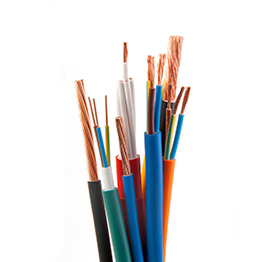
Solar panels are a key component of any solar energy system, and the proper wiring of these panels is essential to ensure efficient and safe energy transfer. Connecting wires to solar panels is a critical process that allows electricity generated by the panels to be delivered to inverters, batteries, and electrical systems. In this article, we will explore the different types of wires used in solar panel systems, their functions, how they are attached to solar panels, and relevant safety information for installation.
Types of Wires Used in Solar Panels
There are several types of wires used in solar panel installations, each serving a specific purpose in the energy transfer process. The two most common types are PV wires (photovoltaic wires) and grounding wires. Here’s a breakdown of these wires and their functions:
1. PV Wires
PV wires are specifically designed for solar panel systems. These wires are durable, UV-resistant, and can withstand harsh weather conditions, making them ideal for outdoor applications. PV wires are used to connect solar panels to inverters and other components of the solar energy system.
Key Features of PV Wires:
- Durability: Designed to resist extreme weather conditions.
- UV Resistance: Prevents degradation from prolonged exposure to sunlight.
- Temperature Resistance: Capable of withstanding high temperatures generated by the solar panels.
2. Grounding Wires
Grounding wires are used to connect the metal parts of the solar panel system to the earth. This helps prevent electrical shock and provides a safe path for excess electricity, reducing the risk of equipment damage or injury in case of a power surge.
Key Features of Grounding Wires:
- Safety: Protects against electrical shock.
- Durability: Made from copper or other conductive materials to ensure reliable grounding.
- Heat and Corrosion Resistance: Prevents wear from environmental factors.
What Do These Wires Do?
PV Wires
PV wires carry the direct current (DC) generated by the solar panels to the inverter. The inverter then converts the DC into alternating current (AC), which can be used to power homes, businesses, or stored in batteries for later use. PV wires are crucial for ensuring that electricity flows efficiently from the solar panels to other components of the solar energy system.
Grounding Wires
Grounding wires provide an essential safety function by connecting metal frames and other parts of the system to the ground. This minimizes the risk of electrical shock or fire in the event of a fault or power surge.
How Are Wires Connected to Solar Panels?
The process of connecting wires to solar panels involves several key steps to ensure proper installation and safety. Here is a step-by-step guide on how to attach wires to solar panels:
Step 1: Identify the Positive and Negative Terminals
Each solar panel has a positive (+) and negative (-) terminal where the wires are connected. These terminals are usually labeled and located on the junction box at the back of the solar panel. The positive wire is typically red, and the negative wire is black.
Step 2: Use MC4 Connectors
MC4 connectors are the industry standard for connecting solar panels. These connectors allow for a secure and waterproof connection between the PV wires and the solar panels. To attach the wires:
- Strip the Wire: Strip about 0.5 inches of insulation from the end of the wire using a wire stripper.
- Insert the Wire: Insert the stripped wire into the MC4 connector. Make sure the positive wire goes into the positive connector, and the negative wire goes into the negative connector.
- Crimp the Connector: Use a crimping tool to crimp the connector around the wire for a secure connection.
- Attach to the Solar Panel: Plug the MC4 connectors into the corresponding terminals on the solar panel.
Step 3: Connect to Inverter or Battery
Once the wires are securely attached to the solar panel, they need to be connected to the inverter or battery system. The inverter will convert the DC electricity generated by the solar panel into usable AC power.
Step 4: Grounding the Solar Panel
Grounding the solar panel system is an essential safety measure. Connect the grounding wire to the metal frame of the solar panel and run it to a ground rod or other grounding system. This ensures that any excess electricity is safely redirected into the earth, preventing equipment damage or injury.
Safety Considerations for Solar Panel Wiring
When working with solar panels and electrical wiring, it’s crucial to prioritize safety. Here are some key safety tips to keep in mind:
- Turn Off Power: Always ensure that the system is powered down before starting any wiring or installation work.
- Use Proper Tools: Use wire strippers, crimping tools, and MC4 connectors specifically designed for solar installations.
- Inspect Wiring: Regularly inspect the wiring to ensure there are no loose or damaged connections.
- Follow Local Codes: Always follow local electrical codes and regulations when installing solar panels to ensure compliance and safety.
Conclusion
Properly connecting wires to solar panels is a crucial step in ensuring the safe and efficient operation of a solar energy system. PV wires and grounding wires serve different but essential roles, with PV wires transferring electricity and grounding wires providing critical safety functions. MC4 connectors make the wiring process straightforward, and following the right installation techniques ensures that the system operates effectively. By adhering to safety guidelines and using the appropriate materials, you can ensure that your solar panel system is both efficient and safe for long-term use.

